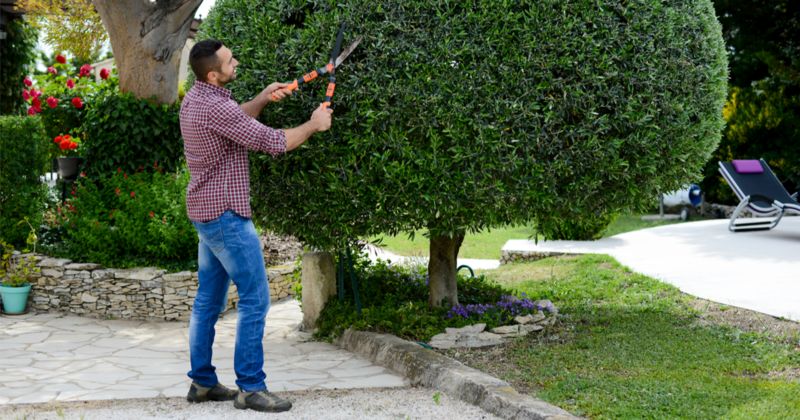
When’s the last time you trimmed your trees? Pruning promotes healthier growth and fruit production and improves the structure and looks of the tree. Pruning can also be necessary when dead or dying limbs threaten the safety of people, property or power lines.
But incorrect trimming can damage or kill your tree. So before you prune, consider the following:
- When to Trim
Unless there’s a limb that poses a problem, late fall to early spring is the best time for tree trimming. Here’s why:
- Bare branches provide maximum visibility.
- Insects and disease (e.g., oak wilt) are less of a problem during colder months.
- Wounds can heal before heat and humidity create ideal fungal conditions.
Tip: Never use wound dressings, and remove dead or diseased limbs ASAP — no matter the season.
- Techniques for Cutting
- Make a shallow, slightly angled cut on the underside of the branch, 4 to 5 inches from the trunk.
- Move 2 to 3 inches out from the initial incision and cut topside until the branch gives way. (This technique prevents falling branches from tearing bark away from the tree.)
- Remove the remaining stub, cutting just outside the swollen collar where the branch meets the trunk. Long stubs slow wound healing and are ripe for infestation and rot.
- Structural Considerations
- V-shaped junctures sometimes compromise structural integrity with age or during bad weather. To prevent issues, remove one of the stems while the tree is young. Similarly, remove any crossing branches that rub.
- Forked trunks can be unstable and often grow together, causing hollow cavities that invite infestation and decay. Eventually, a trunk may break and damage the entire tree. Cutting one trunk at the ground while the tree is young can prevent these issues.
- Clustered branches deprive trees of sunlight and proper air circulation, weakening development. Thin as needed. Suckering (new shoots at the trunk base) weakens trees and should be cut at the ground before reaching 6-12 inches.
- Tools
Pruning shears, a pruning saw and loppers are enough for most jobs. Additional tools can be rented as necessary. Always call a professional for tricky jobs near your home and power lines.
Have questions or need help? Get in touch.

